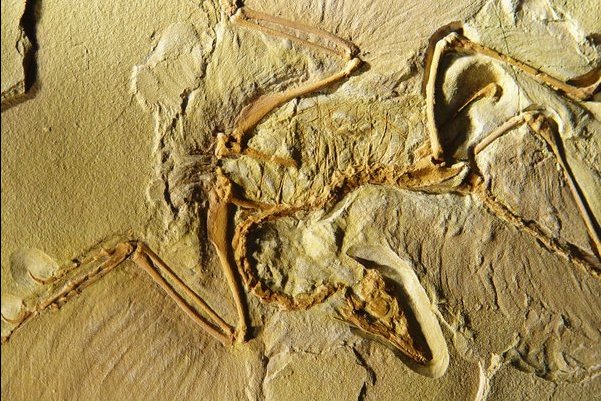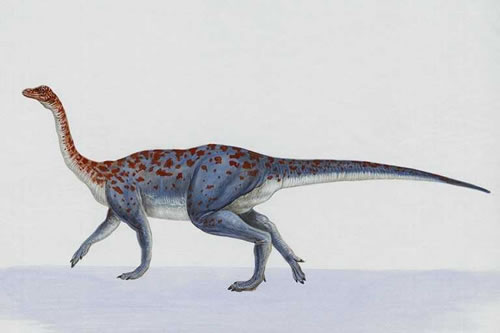A new study of the specimen has revealed the color of its feathers (Winged Dinosaur Archaeopteryx Dressed for Flight). Why does the color matter? The color and the pigment cells indicate that the feathers themselves were durable and rigid, characteristics needed for flight. Closer examination of the feathers also revealed that the structure is identical to that of modern bird feathers. This may seem like an elementary finding, as melanosomes (pigment cells) have been found in many fossils. However, these have previously been misidentified as bacteria. They were visable only with a power confocal microscope. Scientists are still not sure how the melanosomes in the archaeopteryx were used. Since the feathers were found to be black, functions could range from camouflage, to body heat regulation, to even flight. However, the presence of melanosomes pushes flight to the forefront, as melanosomes provide strength and protect from abrasion during flight.
The second dinosaur story deals with the discovery of a nursery in South Africa that contained ten nests (Fossils in South Africa Reveal Dinosaur Nesting Site: 190 Million Years Old). This nesting site was found to be 190 million years old, and it belonged to a prosauropod named Massospondylus.
The authors of this study site that this nursery is 100 million years older than any previous find. The nests contain up to 34 eggs, all in tightly clustered arrangements. What is significant about this find is that it gives insight in the behaviors of Massospondylus. The clustered arrangement of the nests indicate that mothers returned to the site repeatedly and often came in groups to lay eggs. The highly organized nature of the nest itself also is evidence that the mother moved and organized her eggs. The nesting ground was found in sedimentary rock from Early Jurassic Period in the Golden Gate Highlands National Park in South Africa. This site also yielded some of the oldest found embryos, which is extremely important to the study of reproductive biology. All in all, this discovery is a boon to understanding dinosaur behavior. Isn't it all so maddeningly interesting??
~LD
Orignal Papers:
Ryan M. Carney, Jakob Vinther, Matthew D. Shawkey, Liliana D'Alba, Jörg Ackermann. New evidence on the colour and nature of the isolated Archaeopteryx feather.
Robert R. Reisz, David C. Evans, Eric M. Roberts, Hans-Dieter Sues, Adam M. Yates. Oldest known dinosaurian nesting site and reproductive biology of the Early Jurassic sauropodomorph Massospondylus.Proceedings of the National Academy of Sciences, 2012;


No comments:
Post a Comment